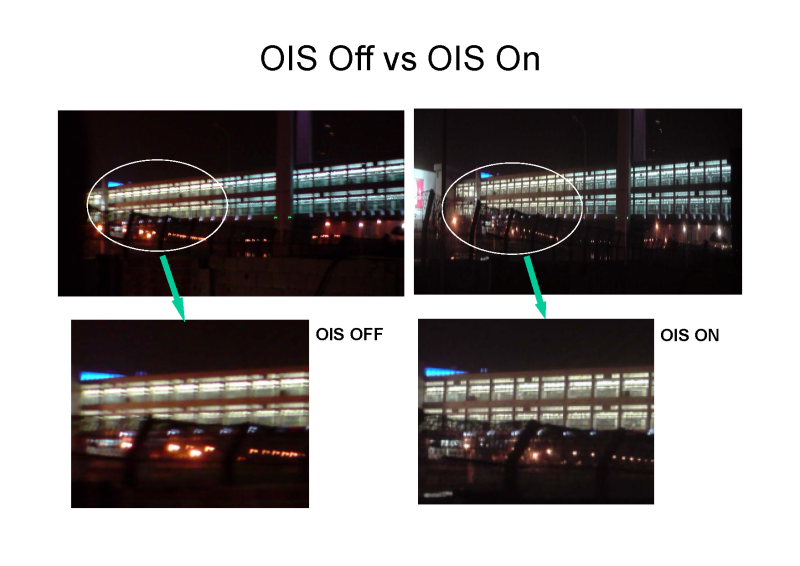Image Stabilization (IS)
As a general rule of thumb for taking pictures, Use a tripod when you adopt a shutter speed longer than one over the focal length. With the advent of Image Stabilization technology, this requirement can be relaxed. If you camera is equipped with Optical Image Stabilization, you have “gained” a few stops ‘wiggle room’ for handholding. For video taking, Image stabilization reduces the blur in your video that results from shaky hands or body movement. Image stabilization is important for all camcorders, but it is particularly crucial in camcorders that have long optical zoom lenses. When a lens is zoomed out to its maximum magnification, it becomes extremely sensitive to even the slightest motion.
Why Optical Image Stabilization (OIS)?
There are two major forms of image stabilization: optical and digital.
An image stabilization technology is considered "optical" if it features a moving element inside the camera lens. Almost all OIS technologies employ gyro-sensor as a feedback sensor that quickly detects the shaky motion and move the lens element to off-set the motion.
Unlike optical systems, digital image stabilization uses software technology to reduce the impact of shaky hands on your video. This can be accomplished in several ways. Some camcorders will calculate the impact of your body movement and use that data to adjust which pixels on the camcorder's image sensor are being used. For video camcorders, digital image stabilization is usually less effective than optical stabilization
Optical Stabilization technology only detects and corrects for slight camera and lens movements during capture. It does not and cannot control what is happening outside of the camera. It will not affect or correct those intended blur associated with photography, for example, shallow depth of field creates fore- and background blur that makes the subject pop is often pleasing and desirable. Another photography example of intended blur is motion blur to express or indicate speed or movement.
Optical image stabilization is the most effective form of image stabilization. This technology has been available in almost all of the cameras in the market today. For instances, you can find OIS technology in DSR cameras, point and shoot cameras, and video camcorders. The challenge is to realize this technology in mobile devices that have a much smaller form factor.


Smartphone Cameras - OIS technology is particular beneficial
Smartphone camera lens apertures are small. It restricts the amount of light that can enter the camera. The image sensor pixels are also miniaturised. This combination means each camera pixel receives very little light compared to digital still cameras. In low light conditions, the exposure time can be increased to let in more light. However, camera shake becomes problematic at slow shutter speeds.
An OIS system is used to stabilise the camera and increase exposure times to provide sharp and bright photos.
Market Trend
OIS feature can be seen in numerous smart phones. It is rapidly becoming a must-have feature in all mainstream smart phones. All the rave reviews received on the smart phones and the positive user feedbacks are a strong testimony that the OIS feature has been well-received. It is destined to become a standard feature in most of the upcoming smart phone models. Can you afford not to have it?


Market Reviews
DPReview is an enthusiast digital photography site providing reviews of consumer digital cameras

OIS outstanding performance was recognized in the market, especially in low-light condition.
For full text, pls visit http://connect.dpreview.com/post/8068966118/htc-one-camera-review?page=9












